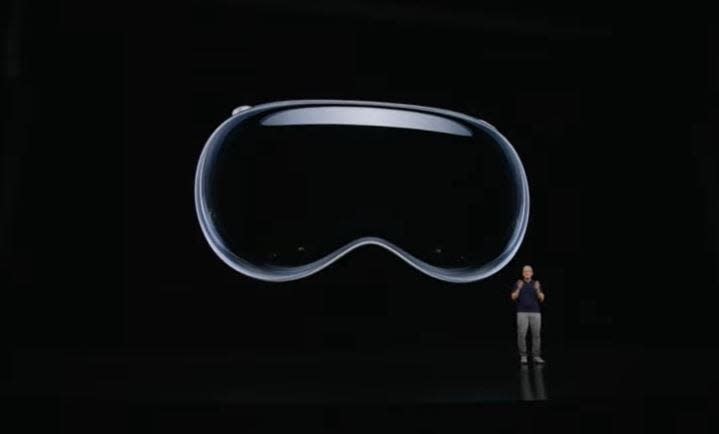Apple’s new goggles are pushing the limits of virtual reality, an idea birthed in Mesa, Arizona

At his sprawling corporate campus in Cupertino, Calif. on Monday, Apple CEO Tim Cook announced the next leap in virtual reality – the Vision Pro goggles.
Cook called the advance “revolutionary” and said it will “shift the way we look at technology and the role it plays in our lives.”
The new apple headset, that can be operated with voice control and minute hand gestures, allows users to move seamlessly in and out of cyberspace.
Virtual reality is imagined first in suburbs of Phoenix
Hundreds of software developers were on hand at Apple’s annual Worldwide Developers Conference to see how far the corporation had pushed out on virtual reality. How many of them knew that virtual reality had been conceived, in of all places, Mesa, Arizona?
That’s a history most Arizonans don’t know. I would venture that half or more of the Mesa City Council is surprised to learn it. A U.S. Air Force history of Williams Field doesn’t even mention it.
The story was first outlined in the Bible of cyber-culture, Wired Magazine, in April 1997.
Wired writer Fred Hapgood was tackling the age-old question, “Does art imitate reality or does reality imitate art?”
Hapgood asserted that in the case of virtual reality it was the latter: The real-world researchers at then-Williams Air Force base in Mesa, not the science-fiction writers, got to virtual reality first.
The Air Force needed to simulate coordinated flight
In 1976, Air Force Captain Jack Thorpe, serving as a research scientist in flight training research and development at Williams, had grown frustrated with the three-story mechanical flight simulators used to train new pilots.
The devices could not simulate one of the most critical aspects of combat flying – aircraft coordination.
"Group interactions are the most complicated combat operations," Thorpe told Hapgood. "They also tend to be the ones in which the costs of screwing up are the highest.
“Yet because it is so difficult and expensive to organize groups, pilots get very little training in collective skills. They have to learn these skills on the job, during combat, which makes casualties disproportionately high during the first few missions."
To solve the problem, Thorpe determined the answer was to use computer modeling to connect dozens of simulators at once, giving each pilot a different perspective of the same digital universe based on the unique location of their simulated aircraft.
Such simulation would require enormous computing power and complicated space/perception digital modeling.
Thorpe outlined his idea in a paper and then waited for technology to catch up.
In the early 1980s, he put together a team to test his simulator network idea called Simnet, short for "simulator networking," wrote Hapgood.
The California-based Perceptronics was selected to build a new generation of simulators, while Bolt Beranek & Newman in Cambridge, Massachusetts, won the contract to create the networking and system software.”
Soon BB&N was delivering simulators to the U.S. military.
In 1982, the science-fiction writer WIlliam Gibson would give his own version of this interconnected real-time universe a name that he would later popularize in his 1984 debut novel and now sci-fi classic "Neuromancer."
He called it “cyberspace.”
Phil Boas is an editorial columnist with The Arizona Republic. Email him at phil.boas@arizonarepublic.com.
This article originally appeared on Arizona Republic: Apple’s new goggles with ties to Arizona push limits of virtual reality

